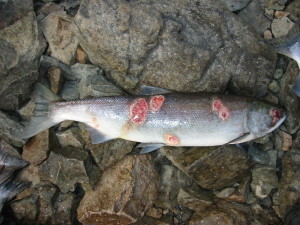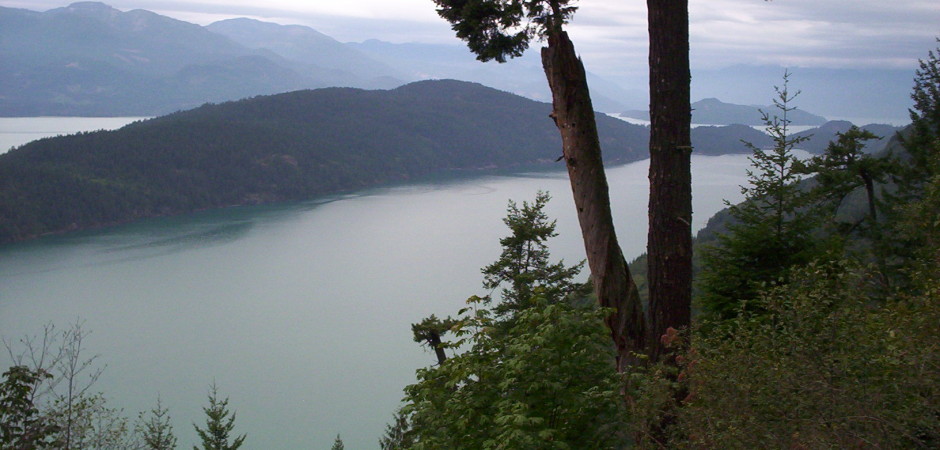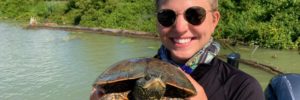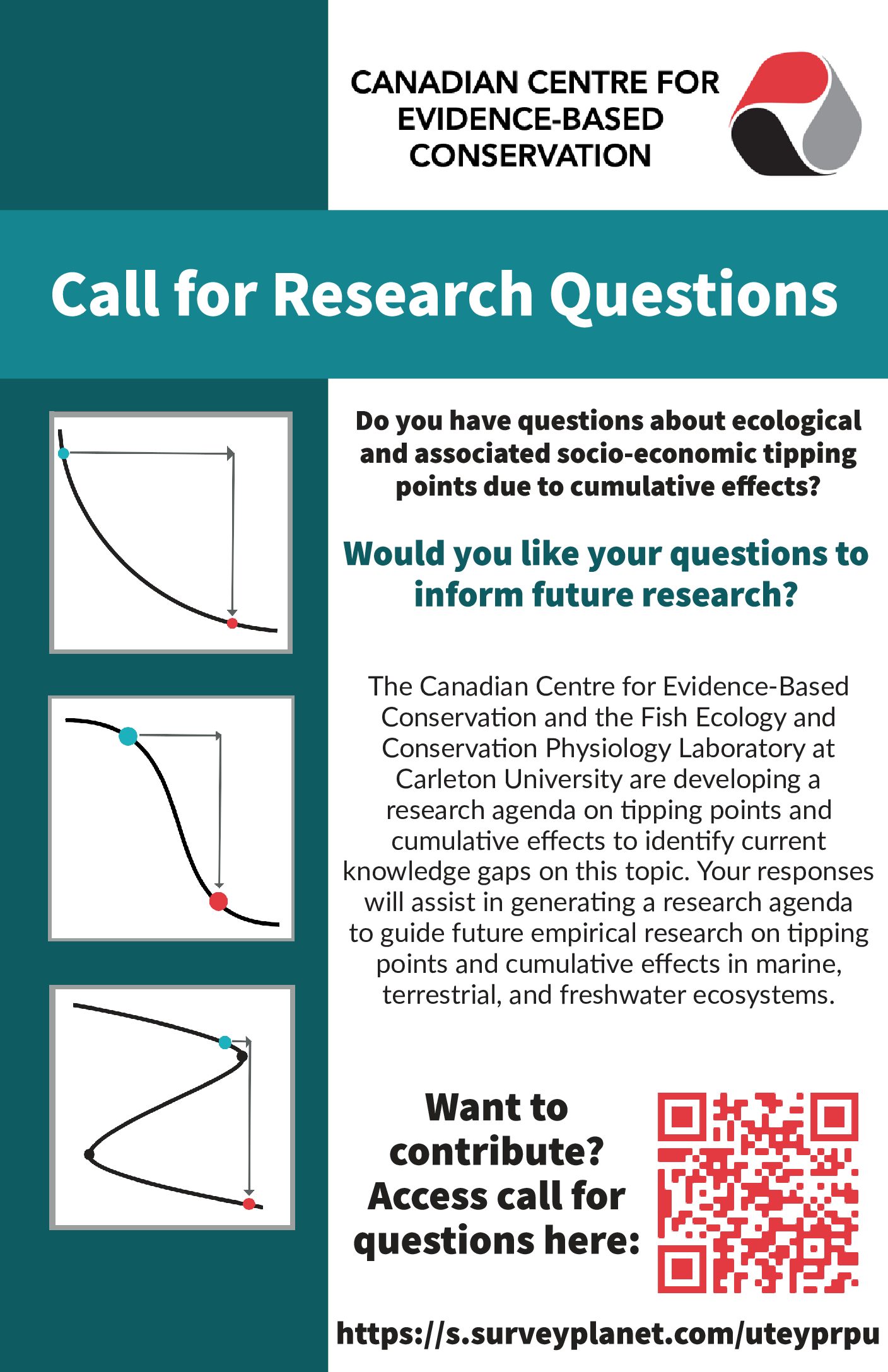Funded By
Natural Sciences and Engineering Research Council of Canada
Research Team
Dr. Steven Cooke, Carleton University
Dr. Scott Hinch, University of British Columbia
Dr. Tony Farrell, University of British Columbia
Dr. Kristi Miller, Department of Fisheries and Oceans
David Patterson, Department of Fisheries and Oceans
Dr. Eduardo Martins, University of British Columbia
Graham Raby, Carleton University
Nicholas Burnett, University of British Columbia
Research Summary
The migration that Pacific salmon make from distant ocean feeding grounds to spawning streams hundreds of kilometers inland is among the most remarkable phenomena in the natural world. In partnership with Dr. Scott Hinch (UBC), Dr. Tony Farrell (UBC), Dr. Kristi Miller (DFO) and David Patterson (DFO), our team has studied the migration biology of Pacific salmon. Electronic tagging studies (including an acoustic telemetry array that is part of the Ocean Tracking Network) have served as the back-bone for our research given that migration is a complex interplay of behaviour and physiology. We also pioneered other techniques where non-lethal physiological samples (e.g., gill tissue for gene array work, blood for determination of reproductive status) are obtained from tagged fish such that we can identify the mechanistic correlates of migration success. Field experiments spanning the ocean and freshwater realm are combined with large-scale laboratory experiments so that it is possible to further explore causal mechanisms. Research efforts have focused on understanding the basis for abnormal migration behavior and en route mortality, predicting the consequences of climate change on salmon, and on understanding the interaction between fisheries stressors (i.e., fish that are captured and released), fish health and survival. Funding has been provided largely by the Natural Sciences and Engineering Research Council of Canada.
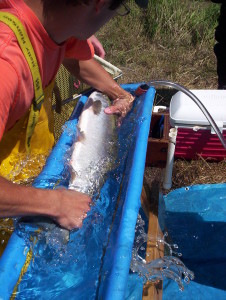
The following publications summarize research activities by our team involving Pacific salmon migration biology:
Cooke, S.J., S.G. Hinch, M.R. Donaldson, T.D. Clark, E.J. Eliason, G.T. Crossin, G.D. Raby, K.M. Jeffries, M. Lapointe, K. Miller, D.A. Patterson, and A.P. Farrell. 2012. Conservation physiology in practice: How physiological knowledge has improved our ability to sustainably manage Pacific salmon during up-river migration. Philosophical Transactions of the Royal Society B 367:1757-1769.
Hinch, S.G., S.J. Cooke, A.P. Farrell, K.M. Miller, M. Lapointe, and D.A. Patterson. 2012. Dead fish swimming: early migration and premature mortality in adult Fraser River sockeye salmon. Journal of Fish Biology 81:576-599.
Cooke, S.J., S.G. Hinch, A.P. Farrel, D.A. Patterson, K. Miller-Saunders, D.W. Welch, M.R. Donaldson, K.C. Hanson, G.T. Crossin, I. Olsson, M.S. Cooperman, M.T. Mathes, K.A. Hruska, G.N. Wagner, R. Homason, R. Hourston, K.K. English, S. Larsson, J.M.Shrimpton, and G. Van Der Kraak. 2008. Developing a mechanistic understanding of fish migrations by linking telemetry with physiology, behaviour, genomics and experimental biology: an interdisciplinary case study on adult Fraser River sockeye salmon. Fisheries 33: 321-338.
